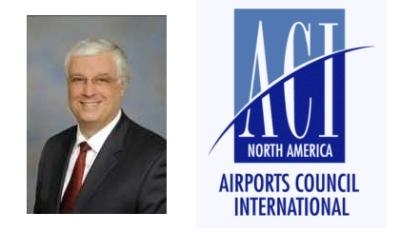Fri, Feb 01, 2013
Indicates Over $71 Billion Needed For Essential Infrastructure Projects
America’s airports need to complete $71.3 billion worth of essential infrastructure projects between now and 2017, including major runway and terminal expansions that are required to keep pace with passenger growth forecasts, according to a new report issued today by Airports Council International – North America (ACI-NA).

The ACI-NA 2013 Capital Needs Survey provides information on all airport projects over the next five years, not just those that are Airport Improvement Program (AIP) eligible, as is the case with the FAA's National Plan of Integrated Airport Systems (NPIAS) report. The survey shows that commercial and general aviation airports have $71.3 billion in total projects that are considered essential by the airports and airport users. The available funding for airport infrastructure projects falls far short of that amount.
“The 2013 Capital Needs Survey makes the case for additional infrastructure investments to ensure the safety and security of the traveling public,” said ACI-NA President Greg Principato (pictured). “Driving these investment requirements is aging airport infrastructure and expected increases in demand over the long term. Further, these projects also help reduce passenger delays and facilitate price and service competition for passengers across the United States,” Principato continued.
The U.S. Chamber of Commerce, U.S. Travel Association (USTA), American Society of Civil Engineers (ASCE) and Building America’s Future have also raised concerns about the impact of not enhancing airport infrastructure. “The aviation sector supports millions of American jobs and generates a tremendous amount of economic activity,” said Janet Kavinoky, executive director of transportation policy at the U.S. Chamber of Commerce.
“Necessary maintenance and modernization investments must be made to renew and upgrade aging aviation infrastructure and to put in place a state-of-the-art air traffic control system. These investments will ensure that future demand in business, passenger, and cargo traffic can be accommodated and that the U.S. airline industry remains competitive globally,” Kavinoky added.
“Over the next decade, projected increases in domestic and international travel to the U.S. will accelerate growth in middle class jobs and keep America globally competitive,” said Roger Dow, President and CEO of the U.S. Travel Association, citing a recent report. “The FAA predicts there will be one billion air travelers per year in the U.S. by 2024. And the Obama Administration has set a goal of attracting 100 million overseas visitors by 2021, which would create an additional 1.3 million American jobs and $859 billion in spending. But in order to realize these benefits, we must make significant investments in our airport infrastructure. Without world-class airports, America will be less connected as a country, less productive as a society and less competitive in a global economy,” added Dow.
During a media briefing, Principato also stressed that the existing federally-mandated funding system fails to meet U.S. airport capital needs for modernizing airport capacity which is critical for a safe, efficient and globally competitive aviation system. “These data also make the case for an increase in the local user fee used by airports to fund development. The value of the Passenger Facility Charge has declined dramatically in inflation adjusted terms since Congress imposed the PFC ceiling in 2000,” Principato said.
More News
“While legendary World War II aircraft such as the Corsair and P-51 Mustang still were widely flown at the start of the Korean War in 1950, a new age of jets rapidly came to >[...]
Decision Altitude (DA) A specified altitude (mean sea level (MSL)) on an instrument approach procedure (ILS, GLS, vertically guided RNAV) at which the pilot must decide whether to >[...]
Aero Linx: National Aviation Safety Foundation (NASF) The National Aviation Safety Foundation is a support group whose objective is to enhance aviation safety through educational p>[...]
Also: Cal Poly Aviation Club, $$un Country, Arkansas Aviation Academy, Teamsters Local 2118 In response to two recent general aviation accidents that made national headlines, more >[...]
“The FAA is tasked with ensuring our skies are safe, and they do a great job at it, but there is something about the system that is holding up the medical process. Obviously,>[...]
 Aero-News: Quote of the Day (04.28.25)
Aero-News: Quote of the Day (04.28.25) ANN's Daily Aero-Term (04.28.25): Decision Altitude (DA)
ANN's Daily Aero-Term (04.28.25): Decision Altitude (DA) ANN's Daily Aero-Linx (04.28.25)
ANN's Daily Aero-Linx (04.28.25) Airborne-Flight Training 04.24.25: GA Refocused, Seminole/Epic, WestJet v TFWP
Airborne-Flight Training 04.24.25: GA Refocused, Seminole/Epic, WestJet v TFWP Aero-News: Quote of the Day (04.29.25)
Aero-News: Quote of the Day (04.29.25)



